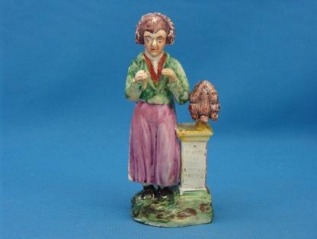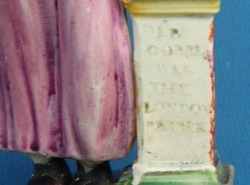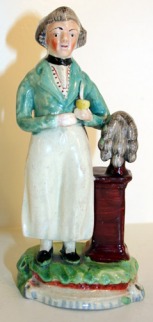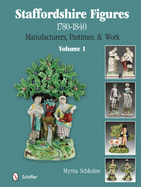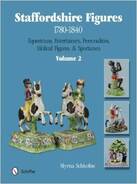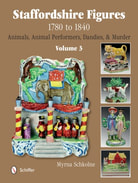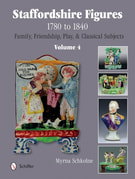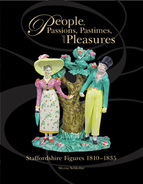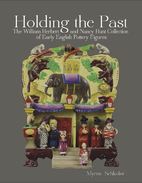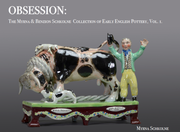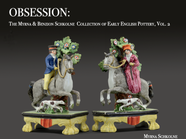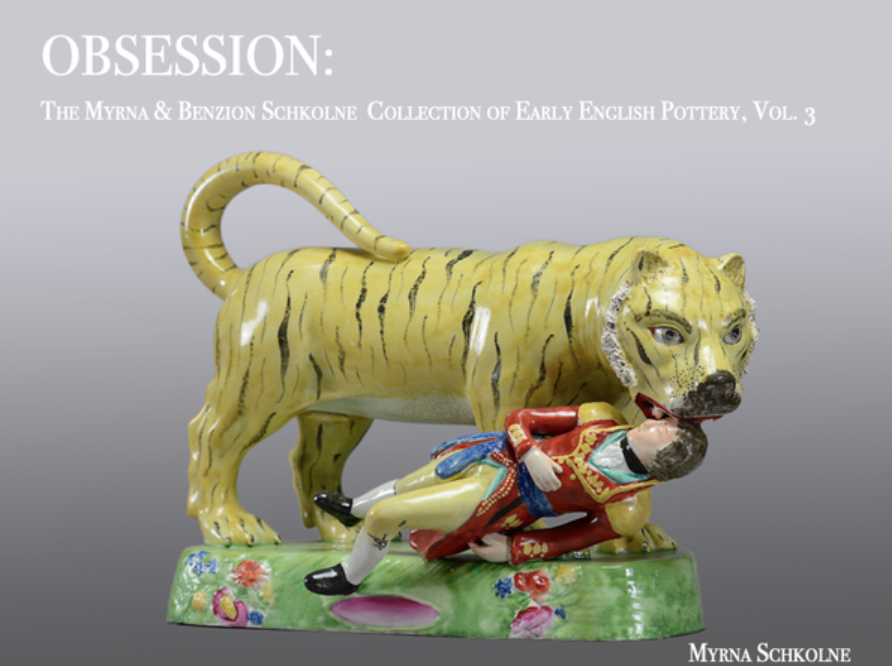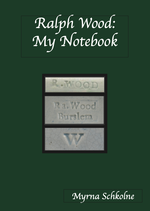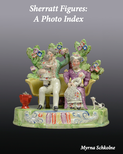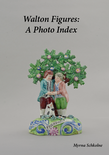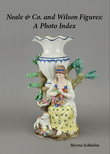I was SO very excited to find this Staffordshire figure of the London Barber the other day. I have seen only one other--in Brighton's Willett Collection and you can see it among the Fabulous Figures included in my book. The figure is 6-1/2" high and portrays a barber standing alongside a wig, which is on a wigstand on a column beside him.
Interestingly, the figure has impressed wording on the column. The Willett Collection's figure is similarly impressed...but the reading of the wording is somewhat open to interpretation in that example. Current wisdom--or lack thereof, and this idiot is guilty here too!--interprets Willett's pearlware figure as reading DEP GOBALD WIG THE LONDON BARBER.
The lettering on the new 'find' is, on the other hand, impressed more clearly. It reads DEP GOBBLE WIG THE LONDON BARBER. What does this mean? Beats me! If you would like to hazard a guess, please post a comment.
Although I know of only two examples of this particular barber, I do know of three examples of a Sherratt-style barber, pictured below.
Clearly, the Sherratt-style figure is quite similar, but it lacks wording.
So now the Barber Count is at five: two with wording, three without. Why so few examples? Well, by the early 1800s wigs had fallen from fashion--in part because of the late 18th century tax imposed on the flour needed to whiten them. People in certain professions continued wearing wigs, but everyone else abandoned this rather uncomfortable fashion accessory. Isn't our London barber a wonderful glimpse of the past?
